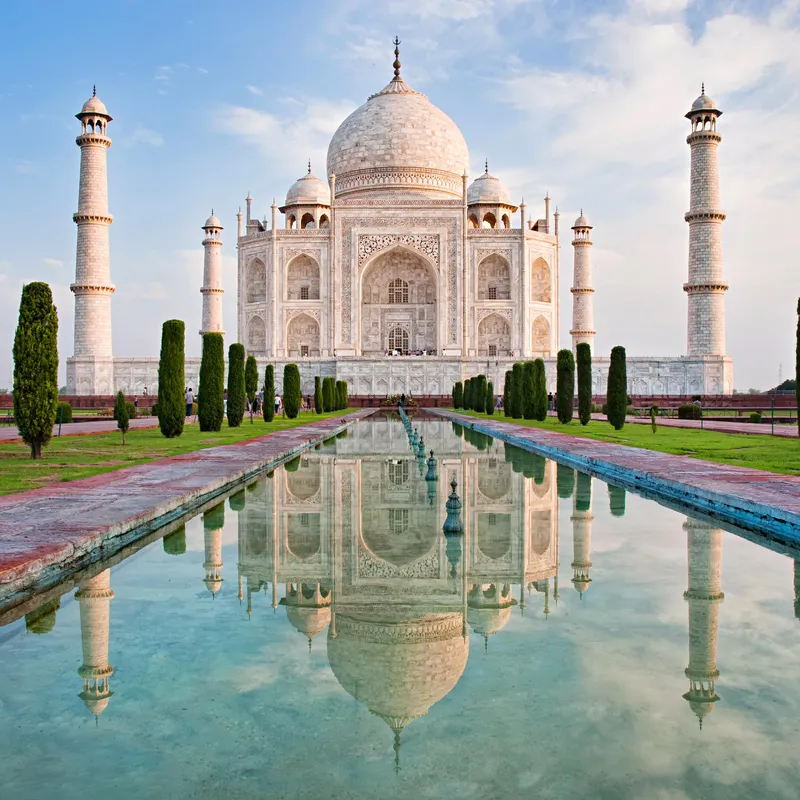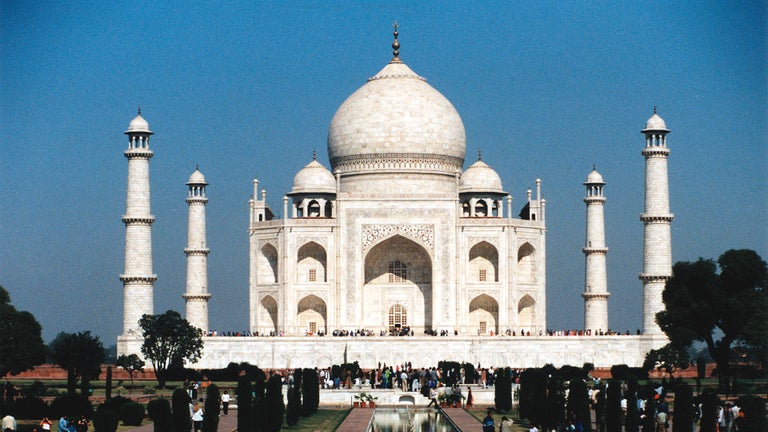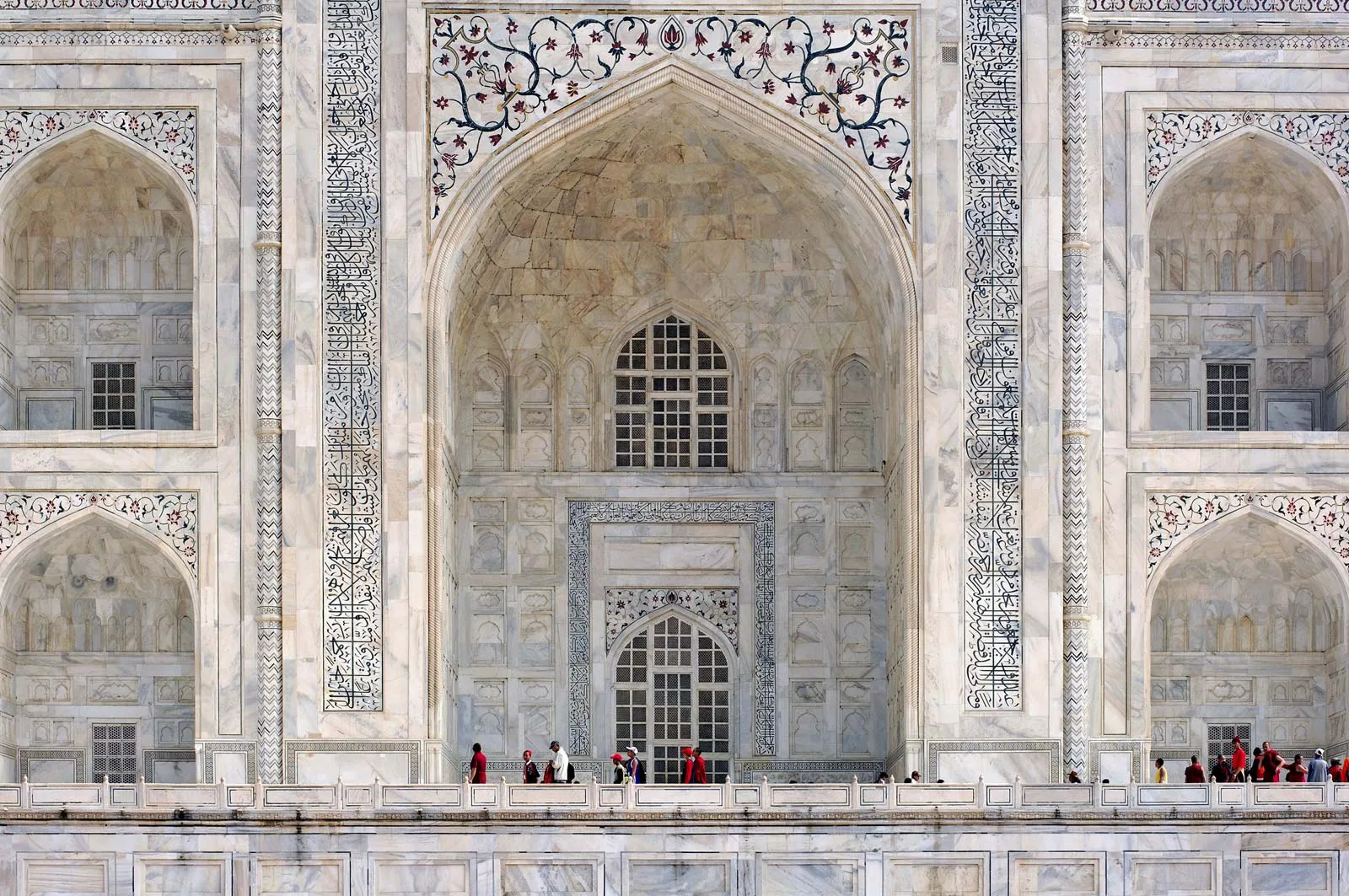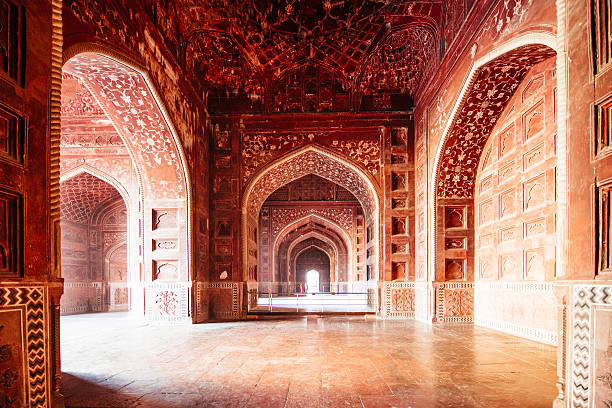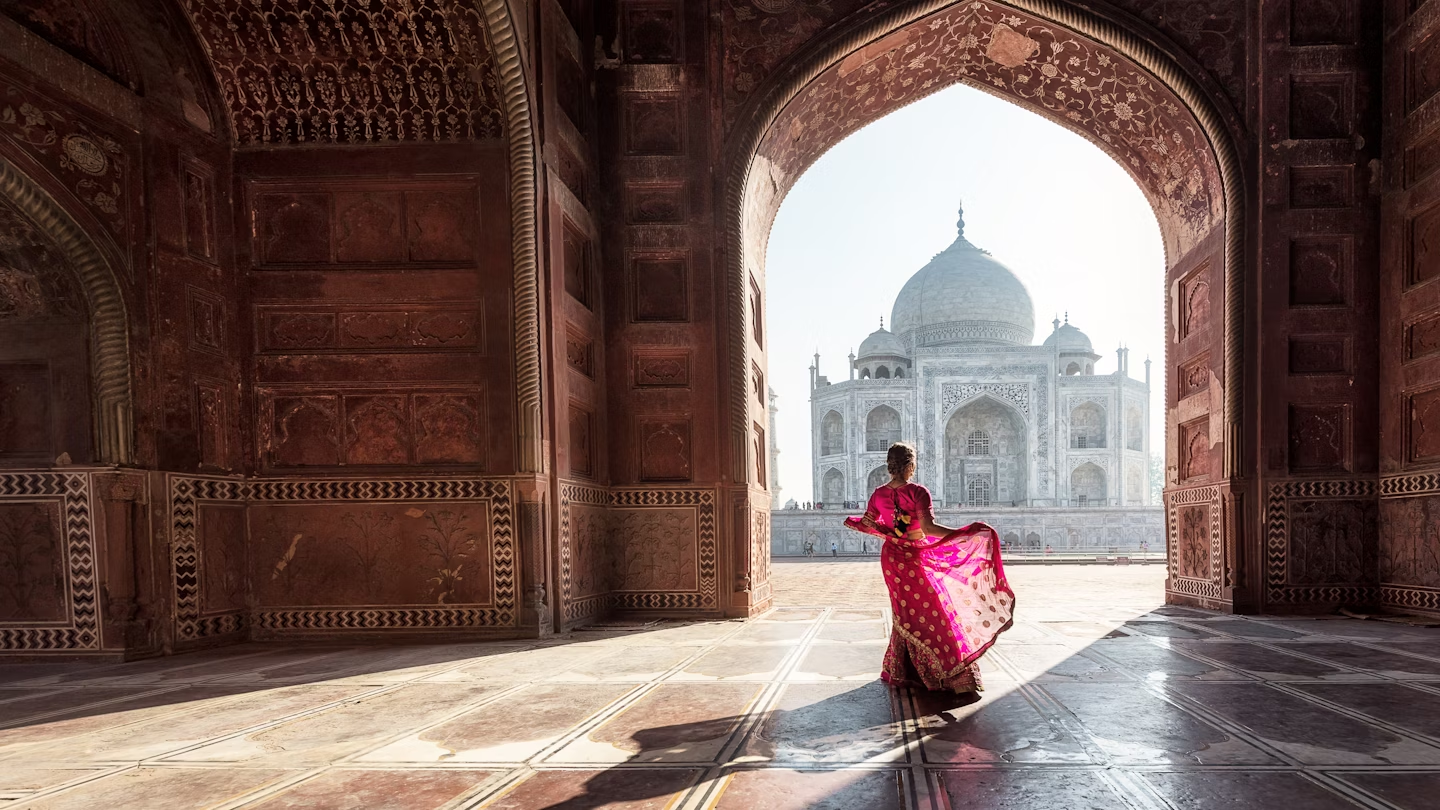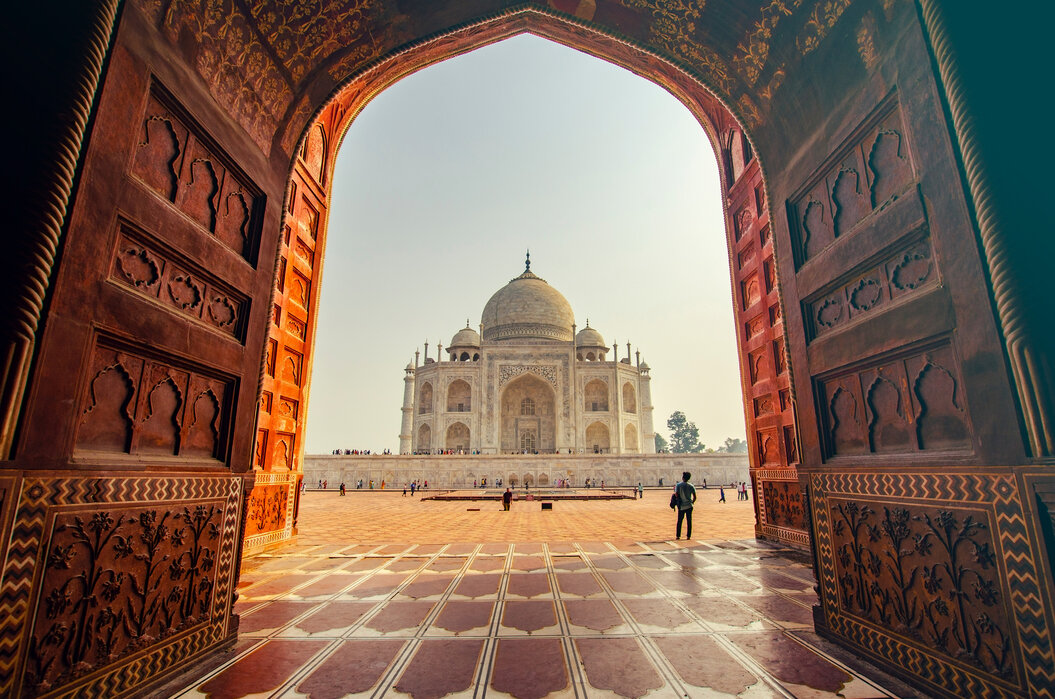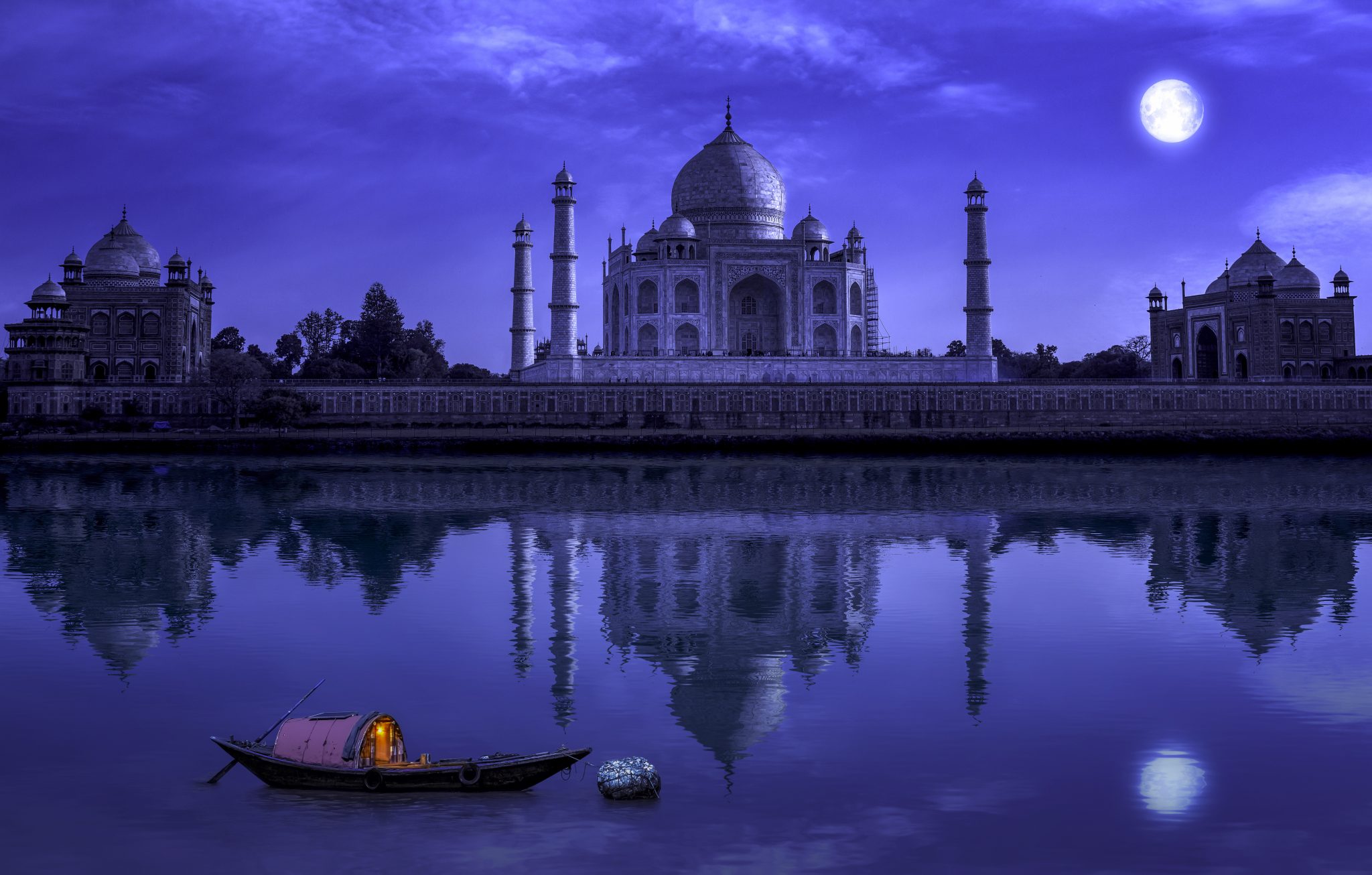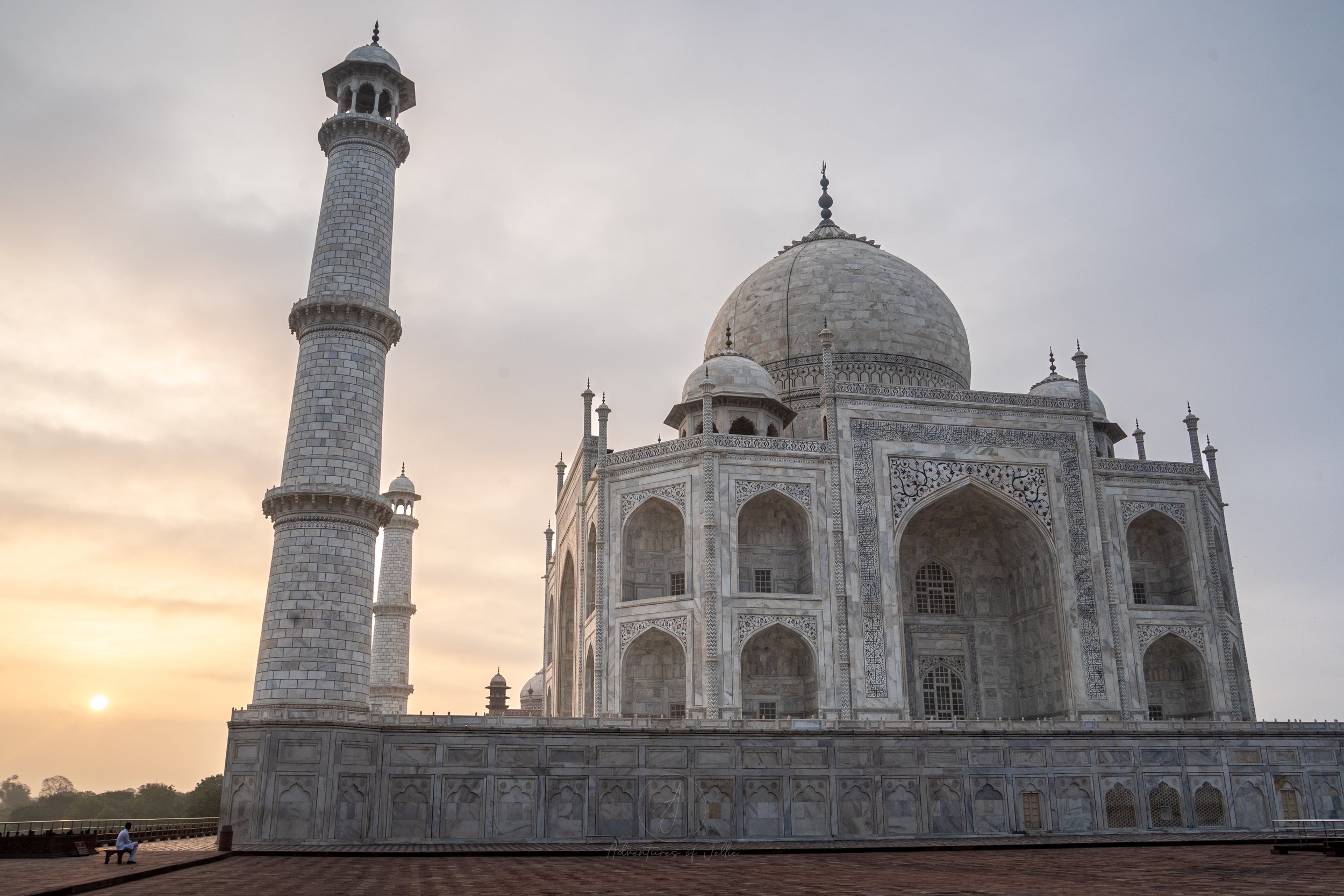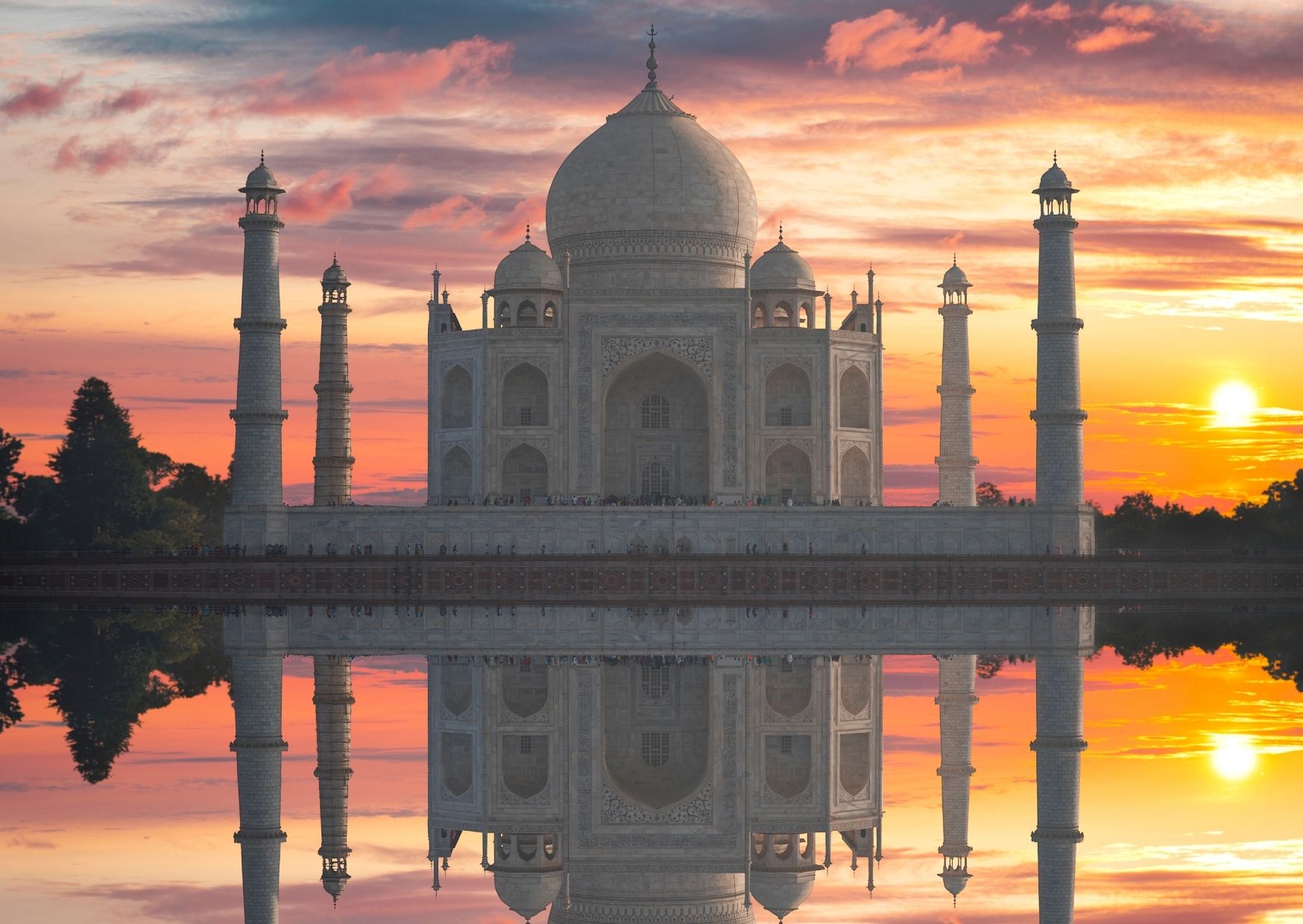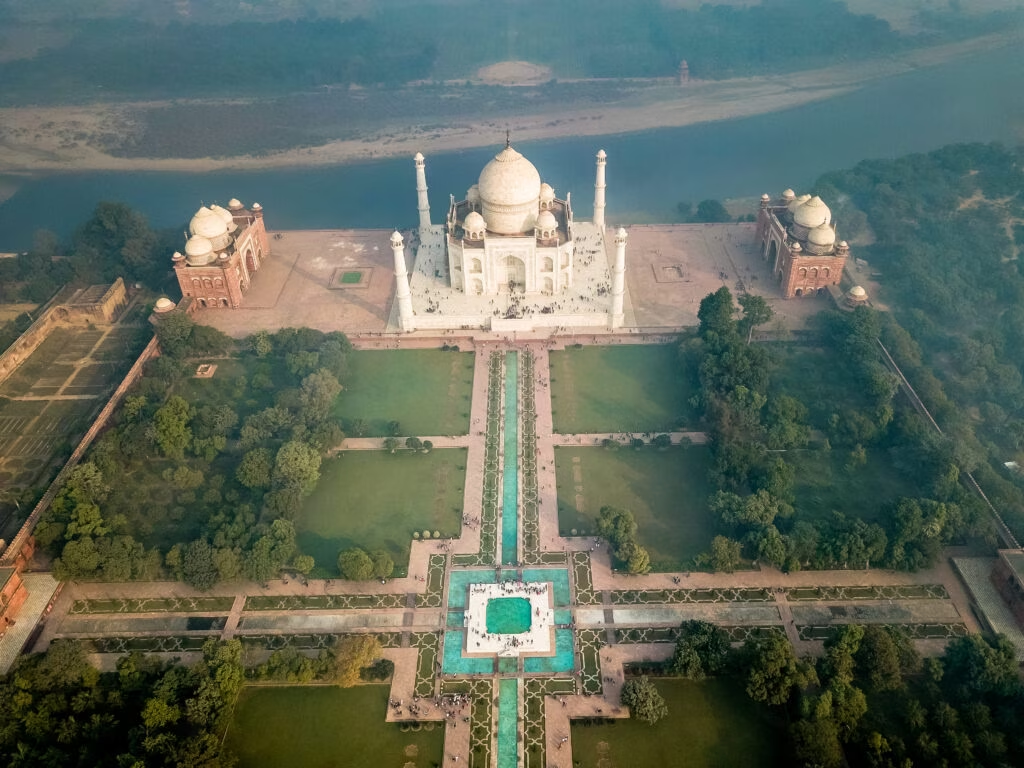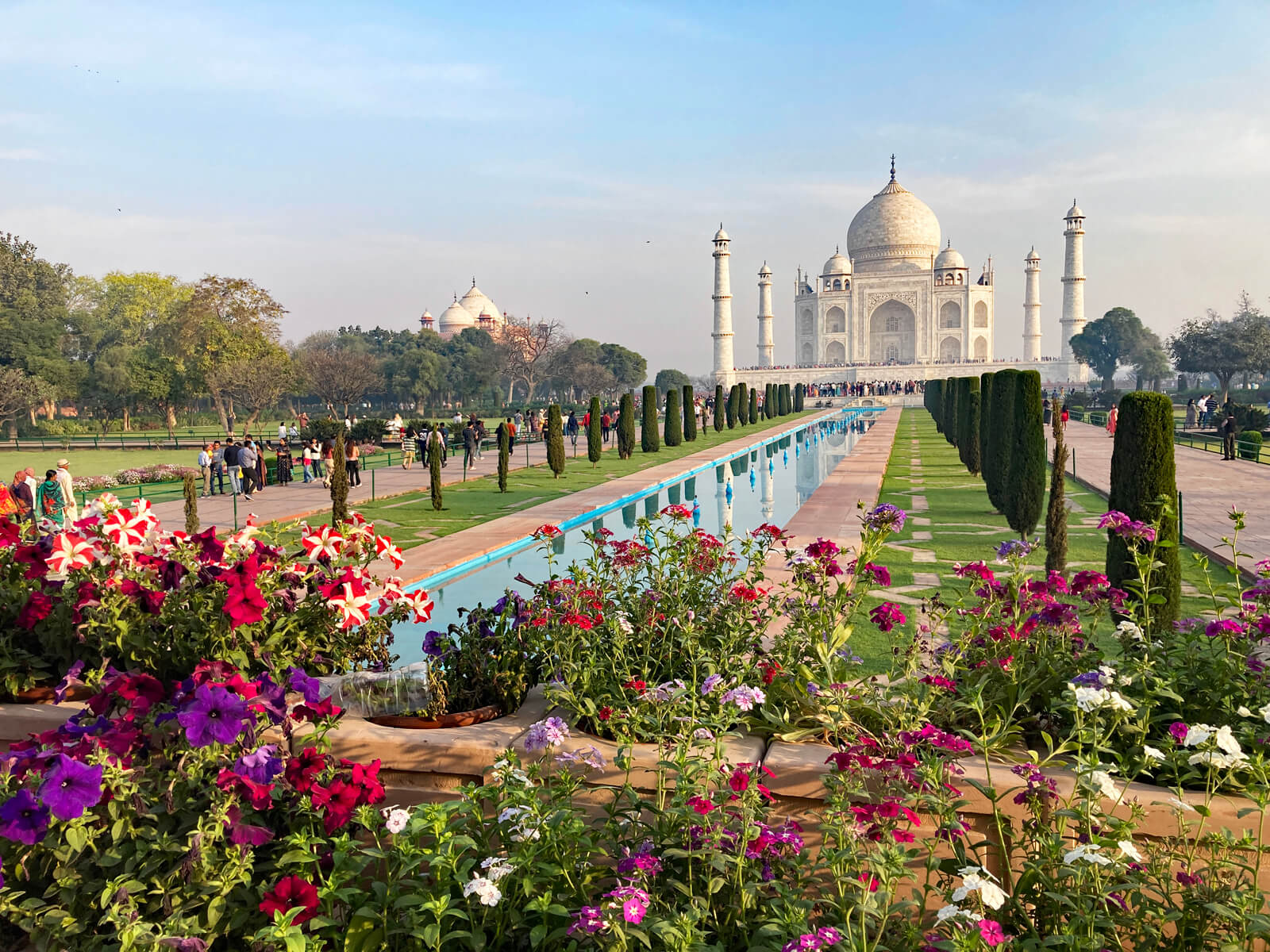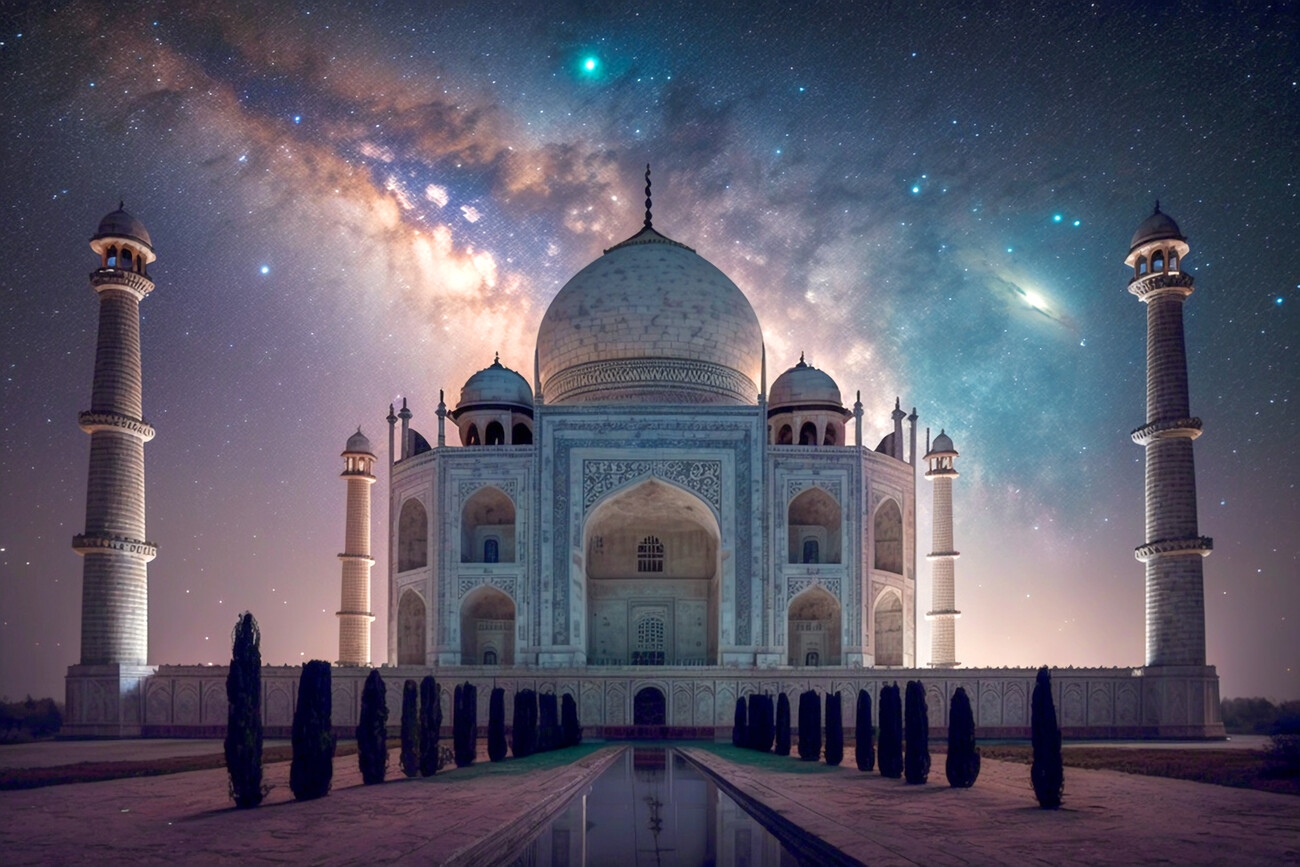Location
The Taj Mahal is a mausoleum complex in Agra, western Uttar Pradesh state, northern India.
Brief History
The Taj Mahal was built by the Mughal emperor Shah Jahān (reigned 1628–58) to immortalize his wife Mumtaz Mahal (“Chosen One of the Palace”), who died in childbirth in 1631, having been the emperor’s inseparable companion since their marriage in 1612. Building commenced about 1632. More than 20,000 workers were employed from India, Persia, the Ottoman Empire, and Europe to complete the mausoleum itself by about 1638–39; the adjunct buildings were finished by 1643, and decoration work continued until at least 1647. In total, construction of the 42-acre (17-hectare) complex spanned 22 years.
Visiting
The Taj Mahal attracts from 7 to 8 million visitors annually, with more than 0.8 million from overseas. Most tourists visit in the cooler months of October, November and February. Polluting traffic is not allowed near the complex and tourists must either walk from parking lots or catch an electric bus.

